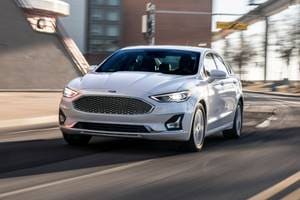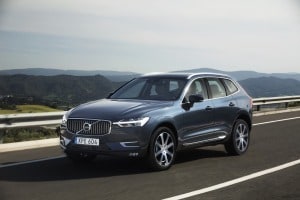Car Sales Mini-Bubble Should Last Into 2012
Auto sales topped 13 million at a seasonally adjusted annual rate (SAAR) for the third month in a row in November. November's SAAR of 13.6 million demonstrated particular strength, compared to September's 13.1 million and October's 13.3 million. But should the auto industry expect this sales trajectory indefinitely? Not exactly. Current sales levels do not reflect a significant shift in underlying economic fundamentals, despite some recent positive indicators. Rather, new car buyers are coming back to the market after delaying purchases this summer when productions shortages from the Japanese earthquake limited supply and raised prices.
Edmunds.com estimates that the "lost" summer sales could total nearly 300,000 units and that roughly 100,000 have been made up to date. As a result, this mini-bubble should support sales well into the first quarter of 2012. New sources of consumer motivation will then have to emerge in order to maintain the accelerated sales pace.

Lost Summer Sales Almost 300k
For the first four months of the year, annualized sales exceeded Edmunds.com's projected base demand of 12.9 million vehicles. Weekly SAARs spiked to nearly 14 million in late March and early April as consumers anticipated shortages and rushed to buy Japanese cars following earthquakes that threw the region's supply chains into chaos. The buy-ahead effect died off by late April as car buyers eased up on purchases of Japanese cars, believing that shortages and high prices had come into effect. By May, decreased production began to affect Japanese inventories, especially for Honda and Toyota, and the new vehicle SAAR fell below base demand levels. With higher prices and short supply, monthly SAARs dipped substantially during the summer. Due in large part to higher gas prices and decreased auto production, the economy also slipped into a soft patch. As economic uncertainty grew later in the summer, people continued to hold off on auto sales, even as supply began to recover. By the end of August, cumulative sales under base demand peaked at nearly 300,000 units.
But by September, the trend reversed and monthly SAARs again rose above the base demand level. Although the economy remained shaky, full production from the Big 3 Japanese automakers finally brought waiting buyers back to market. This trend continued in October and accelerated in November, with Edmunds.com estimating that approximately 100,000 "lost" sales have been recovered to date.

A chief concern for automakers is how much of the still unrecovered deferred demand can be attributed to new car buyers who ultimately defected to the used car market. In this case, though, there appears to be a minimal number of lost sales to the used car market. In recent months, used cars also have been subject to tighter inventories and higher prices, resulting from increased demand for Japanese and fuel efficient cars by consumers and dealers. In many cases, the gap between new car and used car prices shrunk. As a result, sales of used cars did not increase significantly this summer. And, the ratio of new to used cars sold from May to August actually increased slightly to 0.33, compared to 0.32 for the same period last year.

Strong Sales Still Ahead
A substantial amount of the remaining deferred demand will likely fuel new car sales in the near future. With a moderate SAAR of 13.2 million for December 2011 through March 2012, the mini-bubble created by buyers returning to the market would continue in December and well into the first quarter of 2012. This rate of buyer return would reduce deferred demand about another 100,000 units. The portion of the remaining lost sales that would return after that, and at what pace, would depend on economic conditions, since some portion of buyers have likely been deterred by current economic uncertainty. For example, positive trends in the U.S. economy, such as steady job growth, moderate inflation or income growth, could reassure buyers sufficiently to make new car purchases. Consumer confidence also would rise if Europe's debt crisis shows signs of containment and if that region appears likely to avoid slipping into another recession, or if China manages to maintain solid growth rates.
Recent economic data suggest that the pace of buyers returning to the market after delaying purchases this summer could accelerate and have a larger impact on sales in December and possibly the early months of 2012. Inflation has moderated and retail spending is up. The labor recovery appears to be gaining some traction as well, with 120,000 non-farm jobs added in November and particular strength in the private sector. And, after falling to recession level lows in August, consumer confidence finally rose in November, jumping from 40.9 in October to 56.0. While a reading of 56.0 does not usually indicate economic strength, the fact that consumer confidence is increasing — and at such a rapid rate — bodes well for continued consumer spending on new vehicles in the near-term. The expected continued release of deferred demand is a key factor in Edmunds.com's preliminary 2012 forecast of sales in the mid-13 millions.
Lacey Plache: is the Chief Economist for Edmunds.com. Follow @AutoEconomist on Twitter.





